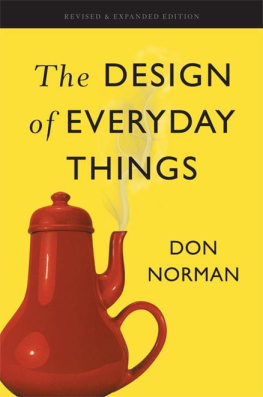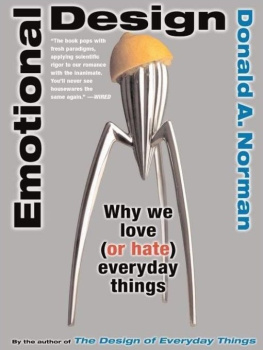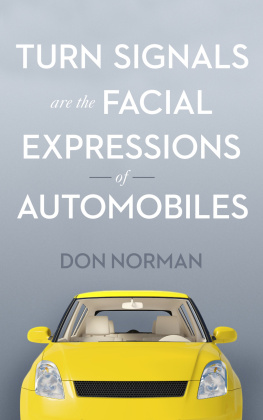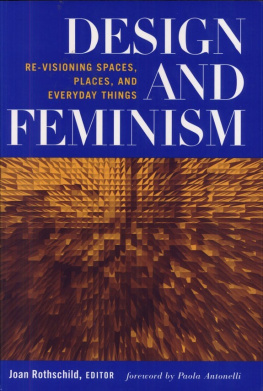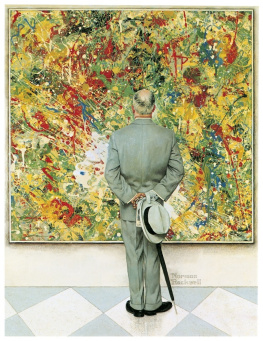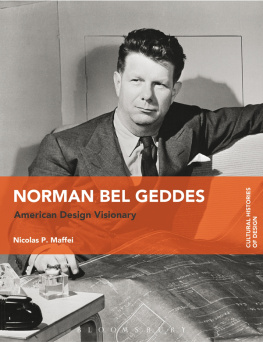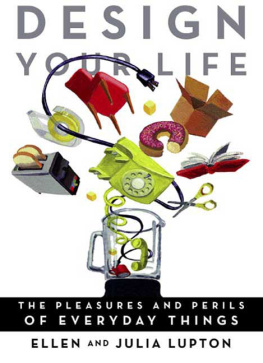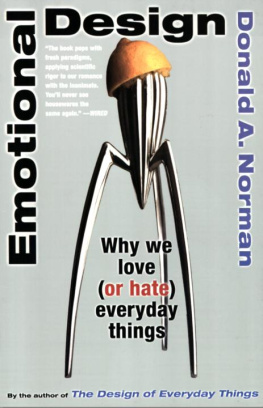Don Norman - The Design of Everyday Things
Here you can read online Don Norman - The Design of Everyday Things full text of the book (entire story) in english for free. Download pdf and epub, get meaning, cover and reviews about this ebook. year: 0, genre: Science. Description of the work, (preface) as well as reviews are available. Best literature library LitArk.com created for fans of good reading and offers a wide selection of genres:
Romance novel
Science fiction
Adventure
Detective
Science
History
Home and family
Prose
Art
Politics
Computer
Non-fiction
Religion
Business
Children
Humor
Choose a favorite category and find really read worthwhile books. Enjoy immersion in the world of imagination, feel the emotions of the characters or learn something new for yourself, make an fascinating discovery.
- Book:The Design of Everyday Things
- Author:
- Genre:
- Year:0
- Rating:3 / 5
- Favourites:Add to favourites
- Your mark:
- 60
- 1
- 2
- 3
- 4
- 5
The Design of Everyday Things: summary, description and annotation
We offer to read an annotation, description, summary or preface (depends on what the author of the book "The Design of Everyday Things" wrote himself). If you haven't found the necessary information about the book — write in the comments, we will try to find it.
The Design of Everyday Things — read online for free the complete book (whole text) full work
Below is the text of the book, divided by pages. System saving the place of the last page read, allows you to conveniently read the book "The Design of Everyday Things" online for free, without having to search again every time where you left off. Put a bookmark, and you can go to the page where you finished reading at any time.
Font size:
Interval:
Bookmark:
CONTENTS
COPYRIGHT
Published by Basic Books,
A Member of the Perseus Books Group
New York
2013024417
10 9 8 7 6 5 4 3 2 1
For Julie
In the first edition of this book, then called POET, The Psychology of Everyday Things, I started with these lines: This is the book I always wanted to write, except I didnt know it. Today I do know it, so I simply say, This is the book I always wanted to write.
This is a starter kit for good design. It is intended to be enjoyable and informative for everyone: everyday people, technical people, designers, and nondesigners. One goal is to turn readers into great observers of the absurd, of the poor design that gives rise to so many of the problems of modern life, especially of modern technology. It will also turn them into observers of the good, of the ways in which thoughtful designers have worked to make our lives easier and smoother. Good design is actually a lot harder to notice than poor design, in part because good designs fit our needs so well that the design is invisible, serving us without drawing attention to itself. Bad design, on the other hand, screams out its inadequacies, making itself very noticeable.
Along the way I lay out the fundamental principles required to eliminate problems, to turn our everyday stuff into enjoyable products that provide pleasure and satisfaction. The combination of good observation skills and good design principles is a powerful tool, one that everyone can use, even people who are not professional designers. Why? Because we are all designers in the sense that all of us deliberately design our lives, our rooms, and the way we do things. We can also design workarounds, ways of overcoming the flaws of existing devices. So, one purpose of this book is to give back your control over the products in your life: to know how to select usable and understandable ones, to know how to fix those that arent so usable or understandable.
The first edition of the book has lived a long and healthy life. Its name was quickly changed to Design of Everyday Things (DOET) to make the title less cute and more descriptive. DOET has been read by the general public and by designers. It has been assigned in courses and handed out as required readings in many companies. Now, more than twenty years after its release, the book is still popular. I am delighted by the response and by the number of people who correspond with me about it, who send me further examples of thoughtless, inane design, plus occasional examples of superb design. Many readers have told me that it has changed their lives, making them more sensitive to the problems of life and to the needs of people. Some changed their careers and became designers because of the book. The response has been amazing.
Why a Revised Edition?
In the twenty-five years that have passed since the first edition of the book, technology has undergone massive change. Neither cell phones nor the Internet were in widespread usage when I wrote the book. Home networks were unheard of. Moores law proclaims that the power of computer processors doubles roughly every two years. This means that todays computers are five thousand times more powerful than the ones available when the book was first written.
Although the fundamental design principles of The Design of Everyday Things are still as true and as important as when the first edition was written, the examples were badly out of date. What is a slide projector? students ask. Even if nothing else was to be changed, the examples had to be updated.
The principles of effective design also had to be brought up to date. Human-centered design (HCD) has emerged since the first edition, partially inspired by that book. This current edition has an entire chapter devoted to the HCD process of product development. The first edition of the book focused upon making products understandable and usable. The total experience of a product covers much more than its usability: aesthetics, pleasure, and fun play critically important roles. There was no discussion of pleasure, enjoyment, or emotion. Emotion is so important that I wrote an entire book, Emotional Design, about the role it plays in design. These issues are also now included in this edition.
My experiences in industry have taught me about the complexities of the real world, how cost and schedules are critical, the need to pay attention to competition, and the importance of multidisciplinary teams. I learned that the successful product has to appeal to customers, and the criteria they use to determine what to purchase may have surprisingly little overlap with the aspects that are important during usage. The best products do not always succeed. Brilliant new technologies might take decades to become accepted. To understand products, it is not enough to understand design or technology: it is critical to understand business.
What Has Changed?
For readers familiar with the earlier edition of this book, here is a brief review of the changes.
What has changed? Not much. Everything.
When I started, I assumed that the basic principles were still true, so all I needed to do was update the examples. But in the end, I rewrote everything. Why? Because although all the principles still applied, in the twenty-five years since the first edition, much has been learned. I also now know which parts were difficult and therefore need better explanations. In the interim, I also wrote many articles and six books on related topics, some of which I thought important to include in the revision. For example, the original book says nothing of what has come to be called user experience (a term that I was among the first to use, when in the early 1990s, the group I headed at Apple called itself the User Experience Architects Office). This needed to be here.
Finally, my exposure to industry taught me much about the way products actually get deployed, so I added considerable information about the impact of budgets, schedules, and competitive pressures. When I wrote the original book, I was an academic researcher. Today, I have been an industry executive (Apple, HP, and some startups), a consultant to numerous companies, and a board member of companies. I had to include my learnings from these experiences.
Finally, one important component of the original edition was its brevity. The book could be read quickly as a basic, general introduction. I kept that feature unchanged. I tried to delete as much as I added to keep the total size about the same (I failed). The book is meant to be an introduction: advanced discussions of the topics, as well as a large number of important but more advanced topics, have been left out to maintain the compactness. The previous edition lasted from 1988 to 2013. If the new edition is to last as long, 2013 to 2038, I had to be careful to choose examples that would not be dated twenty-five years from now. As a result, I have tried not to give specific company examples. After all, who remembers the companies of twenty-five years ago? Who can predict what new companies will arise, what existing companies will disappear, and what new technologies will arise in the next twenty-five years? The one thing I can predict with certainty is that the principles of human psychology will remain the same, which means that the design principles here, based on psychology, on the nature of human cognition, emotion, action, and interaction with the world, will remain unchanged.
Next pageFont size:
Interval:
Bookmark:
Similar books «The Design of Everyday Things»
Look at similar books to The Design of Everyday Things. We have selected literature similar in name and meaning in the hope of providing readers with more options to find new, interesting, not yet read works.
Discussion, reviews of the book The Design of Everyday Things and just readers' own opinions. Leave your comments, write what you think about the work, its meaning or the main characters. Specify what exactly you liked and what you didn't like, and why you think so.

